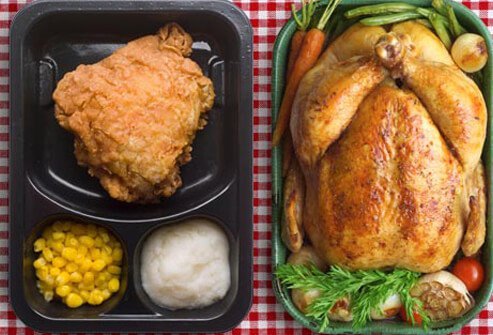
The paleo diet emphasizes eating food that our ancestors would have eaten. This diet includes foods like apricots, dried pumpkin seeds, and banana with almond butter. It's also rich in sweet potatoes, chicken, and other veggies. EatingWell supports certain foods even though the paleo diet might seem restrictive. Here, we'll discuss which ones you can eat while still maintaining a healthy diet.
Pola Makanan Paleolithic Manusia
Christina Warinner, Ph.D., studied pola makan manusia purba and mitos-mitos pola makanan paleolithic manusia in 2010. She reveals that manusia Paleolithic consumed large amounts of daging and ate all kinds of meat. This myth was popularly believed by paleolithic individuals, but it is now obsolete and irrelevant.
The diet of the paleo, also known by the diet of manusia ga, allows you to eat the same food as manusia guma used to eat. They not only improve their kesehatan but also help to preserve their heritage. This diet is not suitable for all. It is not for everyone.
The lukisan in the Ramasokat is made up of two types of kelompokan: ceruk and lukisan gua. They were cultivated in the areas of Sulawesi Tenggara and Liabalano. The lukisan gua includes a variety of proteins, carbohydrate, and amino acids. These nutrients support healthy living. They may also help us understand the details of human evolution.

Modern humans eat a variety of foods that have many benefits but also come with some risks. People who eat foods rich with nutrients, such the Paleolithic Era diet, are more likely than others to develop diseases. Clean eating will help reduce your risk of disease. Clean Eating is an excellent way to eat healthier. This diet has many benefits: It is good for your health and will not cause you to get sick.
Paleolithic diet: Foods allowed
A lot of processed foods contain added sugars and vegetable oils. These can have a negative impact on your health. Salt and refined sugars are both factors that contribute to obesity and can cause heart disease. Vegetable oils are also controversial; the American Heart Association recommends safflower or corn oil as replacements for canola oil. These oils contain high amounts of omega-6 fat acids.
Many commercial paleo diets restrict dairy products to a minimum, while others have stricter restrictions. The paleolithic menu includes lean pork loin with onion and carrot stuffing, roasted chicken with onions and carrot stuffing, and steamed broccoli. Other paleo diets allow honey and maple syrup in small quantities. There are varying levels of scientific research about the benefits of this diet.
One thing that paleo fans recommend avoiding are legumes, which contain high levels of phytic acid. These substances hinder the absorption vital minerals from your gut. They are allowed in certain cases. Although it is tempting to eat potatoes and legumes, they are not recommended for daily consumption. Instead, include lots of fruits and veggies in your daily meal plans.
Guidelines for eating a paleolithic lifestyle
Although they are quite different from the usual modern diet, the Guidelines to Eating a Paleolithic Diet share many of the same principles. Although the Paleolithic diet was mostly made up of animal products, it also includes a lot of plants and has few restrictions. However, it is important to note that you may not be genetically suited for the diet, and that the higher meat consumption may not be healthy. Paleolithic food is not for everyone.

Dairy products are the most popularly excluded food groups on the Paleolithic diet. Cutting out these key food groups may leave you at risk for nutritional deficiencies. Tooth decay can be caused by a deficiency of calcium. A diet low in this mineral may also cause problems with your bones and teeth. Calcium plays an essential role in blood clotting. Whole grains can reduce your risk of stroke, heart disease and type 2 diabetics. However, calcium deficiency can occur because grains have been largely eliminated.
There are many principles that guide Paleolithic food choices. It emphasizes eating nutrient-rich plants and proteins, and limits carbohydrates and processed foods. You should follow these guidelines carefully to avoid going overboard. Each person's paleolithic lifestyle is unique. It is important to understand that the Paleolithic diet is based on a lifestyle that was prevalent 10,000 to 12,000 years ago.
FAQ
What should a novice cook do first?
Beginners should begin cooking simple dishes like soup, pasta, and rice. Learn how to cook with a recipe book, YouTube video or other resources. Cooking is fun when you do it with someone else. Cooking together is fun with family members or friends.
How can I get hired for my job as a cook
Word of mouth can help you get a job as an experienced cook. A friend or family member might know of an open restaurant that is in desperate need of staff. You might also find openings advertised on websites or bulletin boards by restaurants.
Are there any ingredients that I must buy in order to make a meal?
There is no need to purchase all the ingredients. Many grocery stores carry pre-made sauces and items that can be used as substitutes. Premade meals are an option if you're looking for a way to save some money.
How much does it cost to go to culinary school?
Prices for Culinary School vary depending upon where you go, what program you select, and how long you stay there. Average tuition costs between $10,000 and $30,000. Most students graduate with approximately $20,000 in debt. There are some programs that offer grants and scholarships as well as work-study options.
What are my options for learning about cooking?
There are numerous cooking classes offered across the country. Many schools offer classes in baking, pastry, wine tasting, and more. A local community college, vocational school, or private institution can offer classes in cooking.
Statistics
- In the United States, the category is estimated at $23.2 billion annually and is growing faster than the market. (washingtonpost.com)
- The median pay for a chef or head cook is $53,380 per year or $25.66/hour, according to the U.S. Bureau of Labor Statistics (BLS). (learnhowtobecome.org)
- You'll be amazed that over 90% of CIA students receive scholarships and grants to finish their culinary studies. (ischoolconnect.com)
External Links
How To
How to make a perfect omelet
Omelets have always been a favourite food to eat for breakfast. But how do you make them perfectly? I've tried many different methods and recipes, but none of them seem to work! So I wanted to share some tips and tricks so that you can make delicious, fluffy omelets every morn.
When making omelets, it is important to be aware that eggs can be temperamental. The eggs must be fresh from an organic source and kept at room temperature until they are ready to be cooked. The yolks and whites will not form properly if they aren't kept cold enough. This makes your omelets look weirdly colored. If you intend to cook your eggs immediately, it's best to use room-temperature egg.
Another tip is to separate each egg before adding them to the saucepan. It is important not to allow any white to mix with the yolk as this could lead to the omelet becoming curdled.
If you add the egg directly onto the stovetop, you might end up burning the bottom part of the egg, which would ruin the texture of your omelet. Instead, microwave the egg for 10 seconds before adding it to the pan. The microwave heat cooks the eggs just right without overcooking them.
Next, let's talk about mixing the eggs. When you mix eggs together, you want to beat them well. Turn the bowl upside down and grab the whisk to do this. Now shake the bowl vigorously. The egg will be thoroughly mixed in the bowl as the air is whipped.
The fun part begins - you need to pour the milk into your mixture. Mix half of the milk with the eggs. Then fold the eggs in half into the remaining milk. If you still see streaks of eggs, don't worry. These streaks will disappear once the omelet has been turned over.
After folding the eggs fold the pan onto medium heat. When the oil starts to hot, wait for the pan to cook. Once the oil has gotten hot, add 1/4 cup of butter and swirl it around so that the entire pan is coated. The lid should be carefully opened. Sprinkle salt in the pan. An additional pinch of salt will prevent the omelet form sticking to your pan.
Cover the pan once the omelet is formed and allow it to cool completely. Flip the omelet by using a spatula. Cook the other half for another minute. Remove the omelet from the pan and serve immediately.
This recipe works best using whole milk. Skimmed milk is also possible.